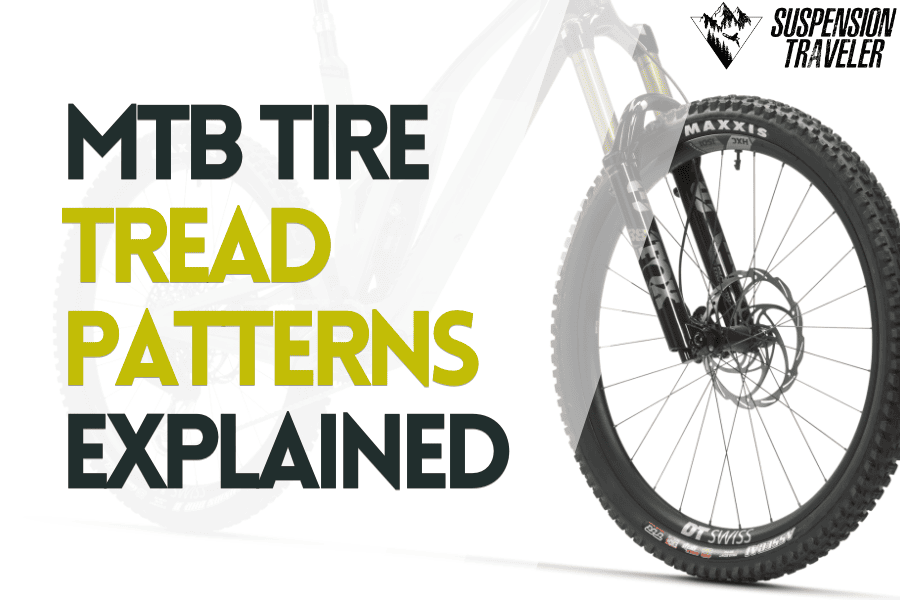The tread pattern or tire profile is arguably the most important part of a mountain bike tire. Names like Minion, Magic Mary, Rekkon, Kryptotal are all referring to tire treads.
They’re key in how your bike accelerates, brakes and turns – and there are treads for pretty much all riding styles or conditions out there.
We’ll cover:
- why there are so many different treads,
- how to easily see which way they should rotate and
- how to pick the best tires.
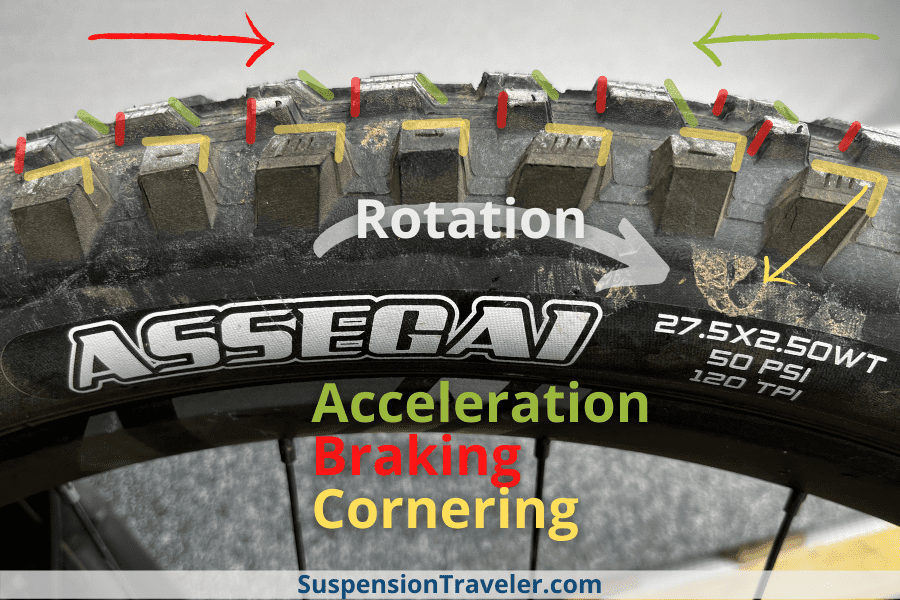
How tread patterns work
Tire treads balance traction with rolling resistance.
The deeper, more aggressive the tread, the better the traction – but the slower the rolling speed.
So tread patterns are tailored to different riding styles and conditions.
Think of them like different types of shoes: you wouldn’t wear slick running shoes for a muddy hike, right?
Similarly, mountain bike tires are designed with specific tread patterns to handle everything from fast, hard-packed trails to loose loam and slippery mud.
Center treads for speed and braking
The middle part of the tire, or center tread, plays a big role in how your bike accelerates or brakes.
The backside of each knob (marked red above) is square-edge to offer resistance under braking. The front side (marked green) is angled to maximize rolling speed.
Cross Country tires often have a raised ridge in the center to roll quickly on smooth trails, making them great for speed but not the best at braking.
Downhill tires instead have big, square edge center lugs with space between them to dig into the dirt under braking.
It’s a trade-off: rolling speed versus grip. The closer and smaller the knobs in the center, the easier it is to pedal.
Side knobs for cornering
Now, let’s talk about the edges of the tire, known as side knobs.
These are required for turns and bite into the dirt when the bike is leaned over. Pretty much all tires have big side knobs, sometimes much bigger than the center tread since there is no disadvantage.
When going straight they don’t decrease rolling resistance and are there when you lean over.
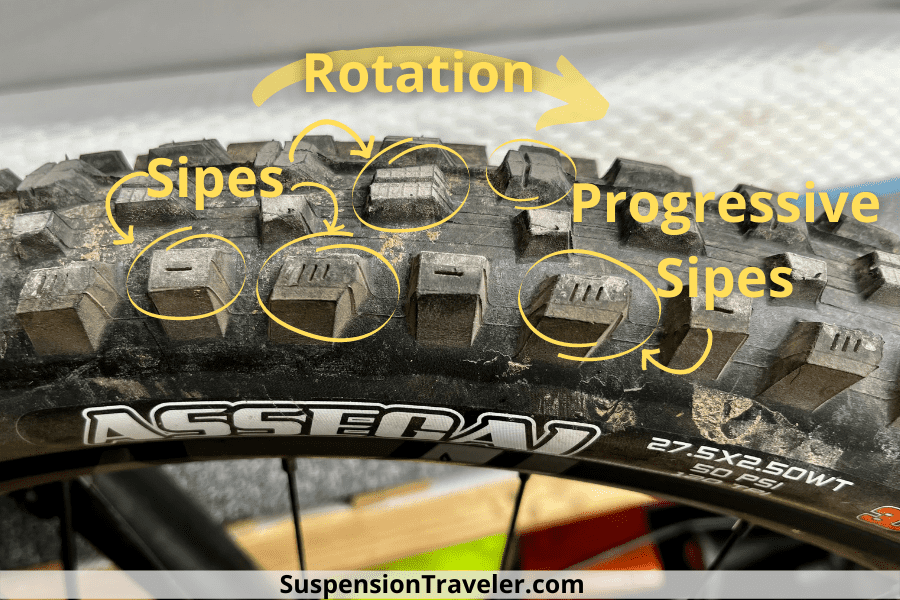
They often have small slices in them called “sipes“. They help the otherwise hard knobs to move and conform to harder surfaces like hard-pack dirt, roots, or rocks for maximum traction.
Rotation direction
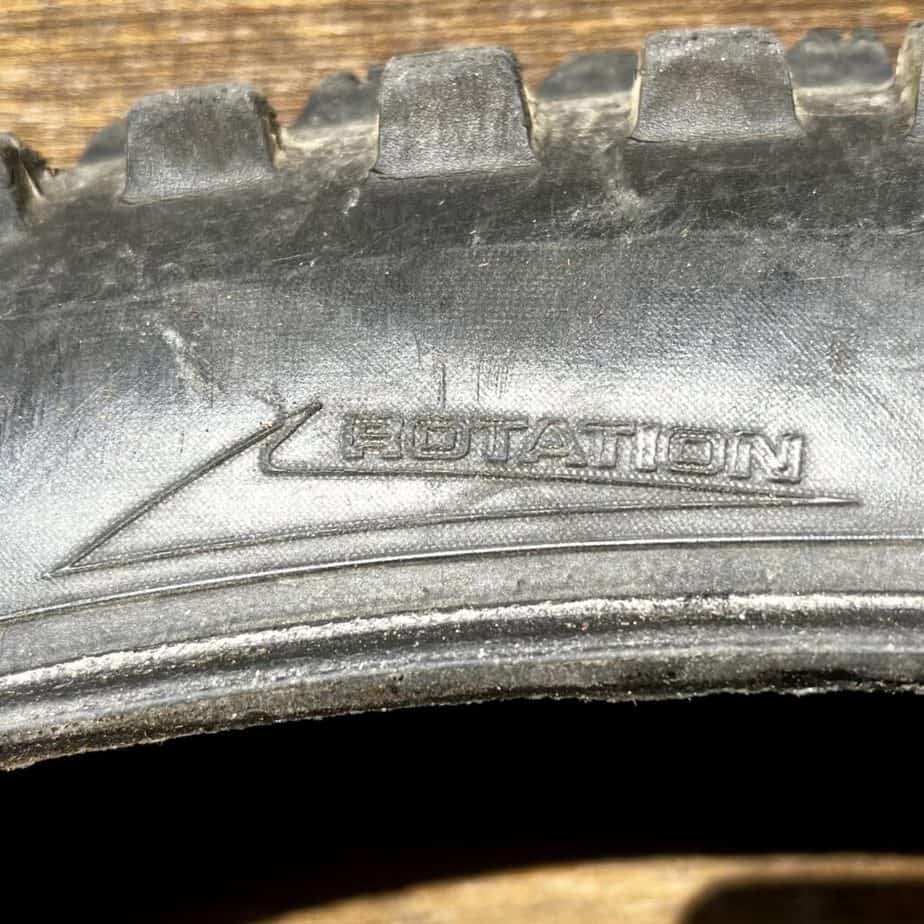
Now, there is a very important aspect to all of the above: the tire obviously needs to roll in the correct direction.
On a directional MTB tire, the tread is designed to roll faster in one direction while creating resistance in the other for braking.
A tire mounted backward has the opposite effect. Instability can be felt through the handlebars, more energy is required when pedaling and braking performance is reduced.
That’s why manufacturers put a rolling direction arrow on the side of each tire to make sure you know which way is forward.
Different Tread patterns: XC to DH
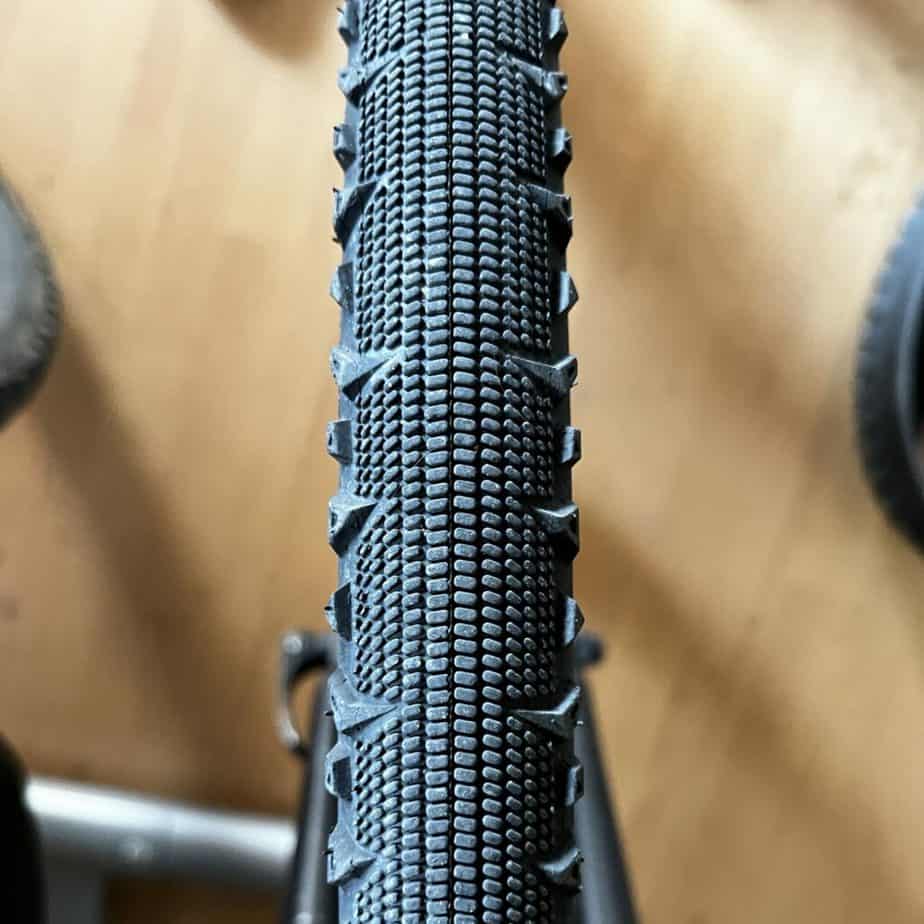
Semi-slick
Semi-slick MTB tires for XC and dirt jumping are what you would expect with that name.
They have a center tread that is as low as possible while technically still being mountain bike tires.
They offer the best rolling resistance with a minimal tread pattern.
The side knobs are usually much more pronounced in comparison and are there for traction on a lean angle.
Those are usually mounted on MTBs with primarily urban use.
Cross Country
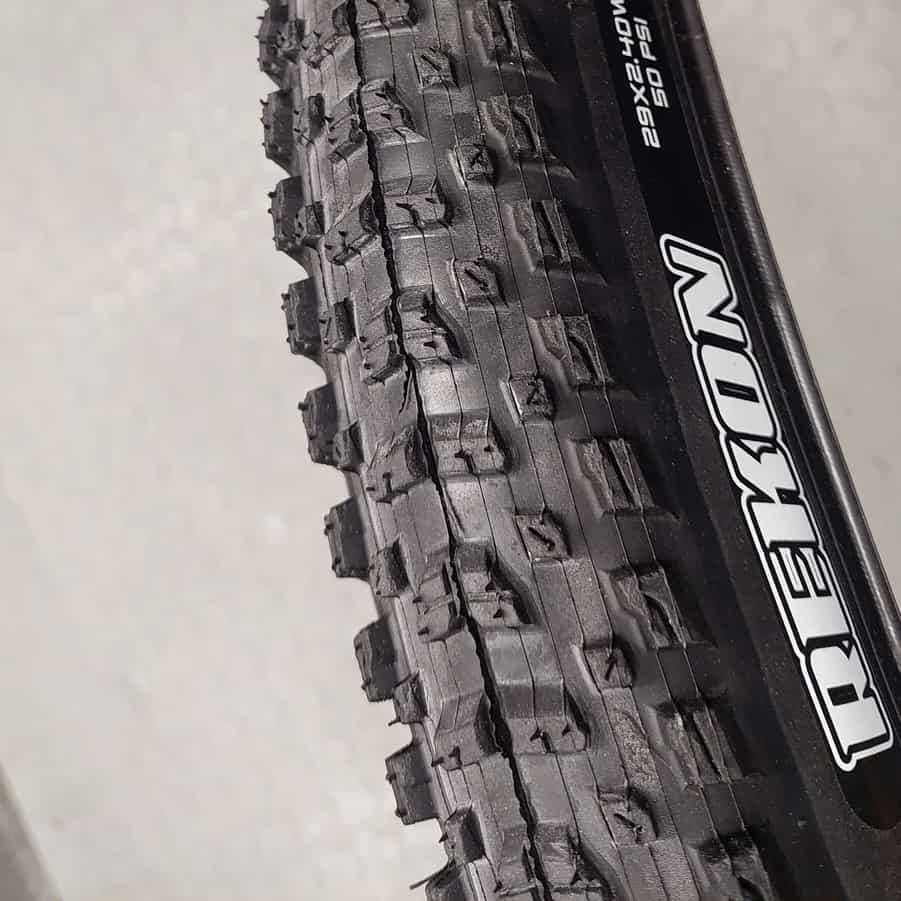
One example for more of a Cross Country tire are the Maxxis Rekons I had on my Trail bike years ago.
The idea was to have the best pedaling efficiency uphill for my days out on the trails.
Turns out, leaning that far into rolling speed came at the cost of predictable traction on any surface except hard-packed dirt.
This is also the case for any kind of loose surface uphill. Spinning tires are kind of a killer for rolling speed.
Mud
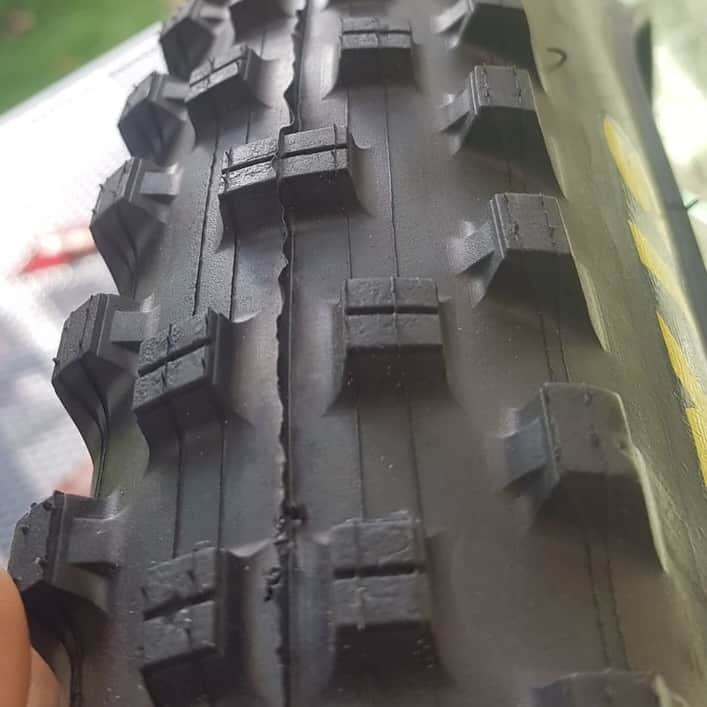
At the opposite extreme are full-on mud tires. The tread pattern on a mud tire like this Maxxis Shorty is very open and has got tall lugs.
Which allows mud to clear from the tire and not stick in between the knobbies.
They need all the grip they can get on loose soil by cutting deep into the ground.
On firm ground, those tall rubber knobs squirm around quite a lot compared to a low-profile tire like a semi-slick.
All Mountain & Enduro
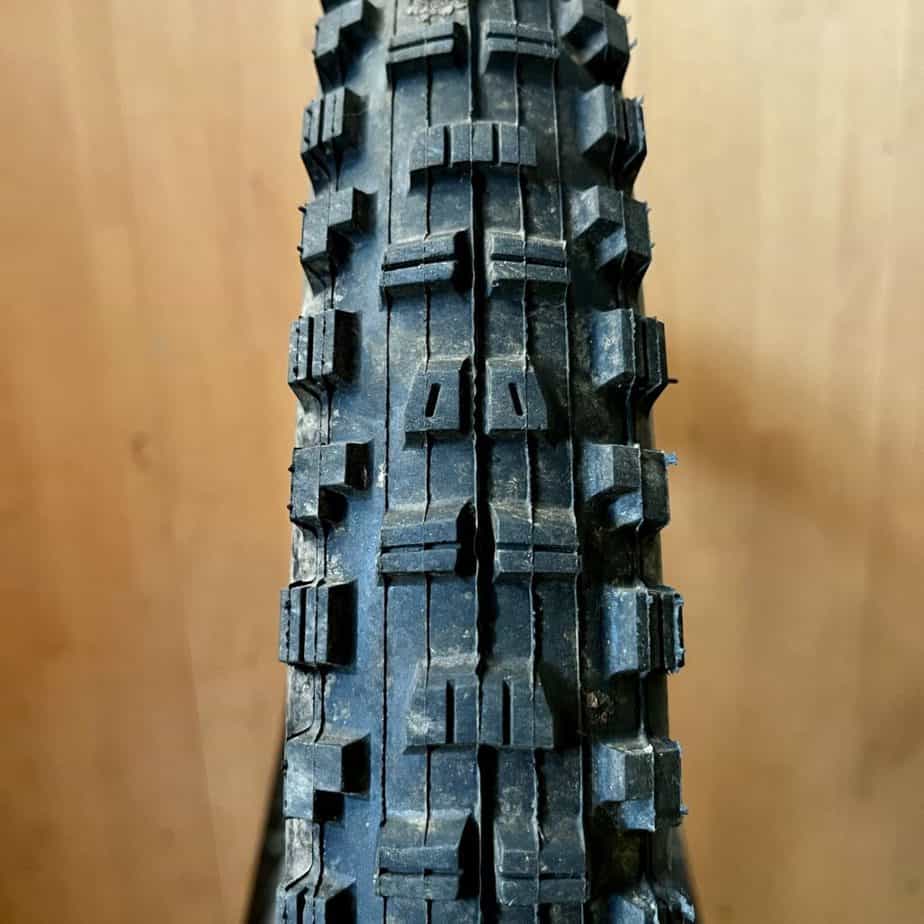
The in-between variant of a mountain bike tire would be something like a Maxxis Minion DHR, which is an aggressive tire designed for rear wheel use.
It’s very commonly used in Trail, Enduro, and Downhill on both front and rear wheels because of its broad window of optimal conditions.
So it strikes a balance between acceleration traction and rolling resistance – a good allrounder.
As you can see, everything is a lot lower with more knobs closer together. That means on hard trails it’s not going to squirm around and remain feeling very predictable.
Downhill
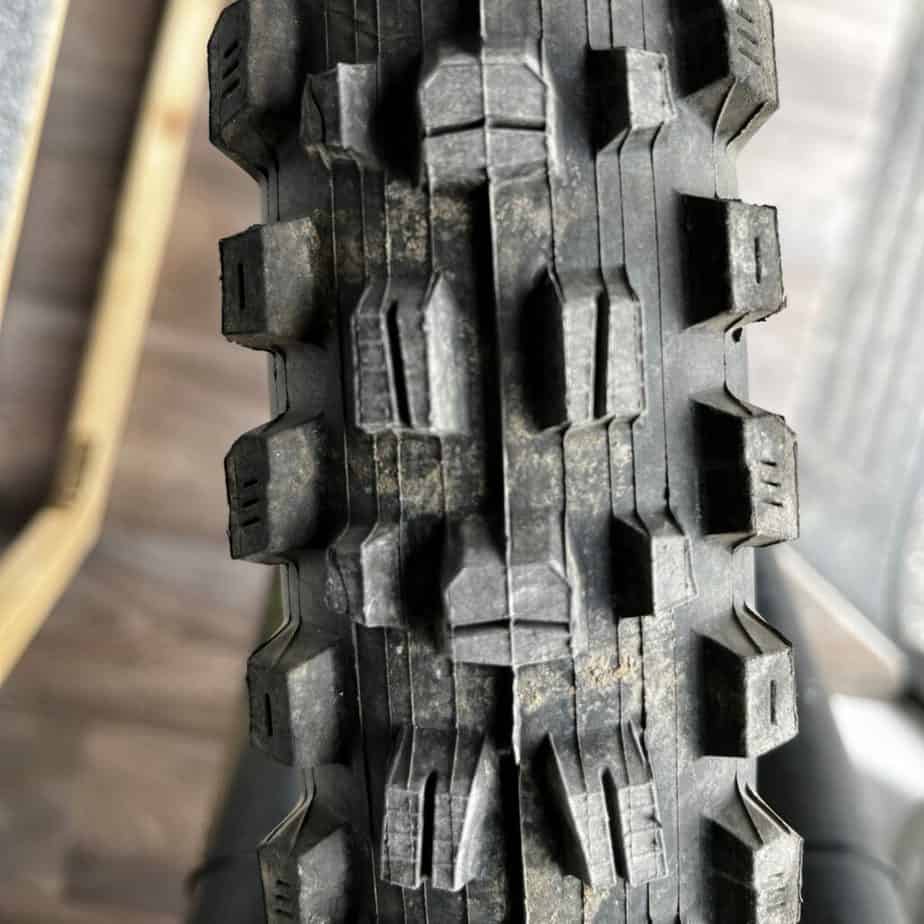
Full-on downhill tires like the Maxxis Assegai are on the other extreme end. This one in particular is designed for racing purposes and it shows.
Everything about it is exaggerated for maximum traction.
Weight is of little concern as long as these tires do their job digging into the ground.
There is a wild mix of various shapes and sizes both in the lugs of the center tread as well as in the shoulder knobs to perform on all kinds of obstacles.
Finding the best tread for you
Match tires to your riding style
Choosing the right tire depends on where and how you ride. Aggressive tires with deep, chunky knobs are awesome for downhill and rough terrain because they dig in for maximum grip.
But, if you’re all about covering long distances with ease, you’ll want tires with shorter, closer knobs to keep rolling resistance low and speed high.
It’s about finding your perfect match.
In my opinion, the best tire is one that feels predictable. It’s the tire that gives you confidence on the trails you ride most often.
While no tire excels at everything, finding one that performs reliably across most conditions you encounter is key.
And remember, experimenting with different tires can unlock new levels of performance and fun on your rides.

